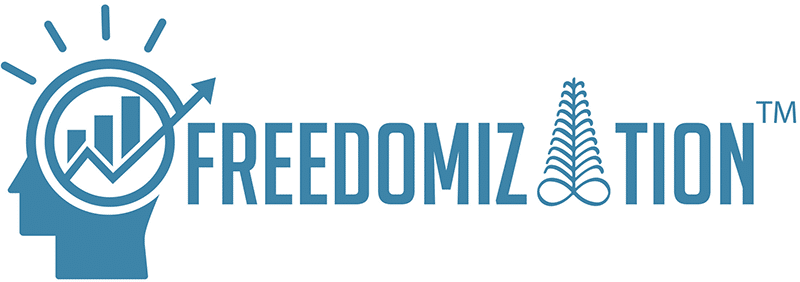Portfolio construction in private assets investing is a domain saturated with opinions. Several schools of thought and philosophies exist around what elements to consider, how to execute, and what to avoid. Trying to develop a sound approach can be an agitating and dizzying exercise aggravated further by the inherent long duration (illiquidity) of the asset class. Unsurprisingly, like most things in life, there is no easy remedy to magically tranquilize the tumult of building a portfolio that rightly or wrongly is burdened with so much expectation (at least in theory).
“Start small”, “Make sure it is cash flowing”, “Be opportunistic”, “Alpha generation is the goal”, “Start with secondaries”, “Let it complement your public investments”, “View it as an extension of your equity allocation” – these are just a few of the many guidelines that investors are barraged with when private assets portfolio building advice is sought. Throughout my career, I have not come across one superior or foolproof way to skin the proverbial portfolio construction cat because a plethora of methods have proven to be historically successful. However, one aspect of private investing that frequently rolls off the tongue of connoisseurs, purists, and novice investors is the concept of “uncorrelated returns.” What does “uncorrelated returns” mean in the context of private assets portfolio building? I want to peel the layers of this oft-bandied term that frequently incites confusion.
It is widely known and accepted that “correlation” in investing refers to a statistical measure of the degree to which two securities move in relation to each other. A correlation coefficient numerically expresses the strength of a relationship between two variables with values that range between -1.0 and 1.0. A correlation of 1.0 indicates an absolute positive correlation – which means the two variables move in lockstep in the same direction. A correlation of -1.0 signifies a negative correlation – here, the two variables move perfectly in opposite directions. A correlation of 0.0 implies no linear relationship or that these variables move independently of each other. In the context of private assets investing, “uncorrelated strategies or assets” typically define investments that have “low” or “no” correlation to traditional asset classes such as public stocks and bonds. Low/no correlation is an attribute generally described as beneficial because less or lessened correlation helps to reduce portfolio volatility and increase the potential for consistent absolute returns. The mathematical rigor of the correlation calculation makes refutation difficult on paper, but what about in reality? Also, what about correlations within the private asset class itself? Do we want all our private investments directionally moving the same way? What idiosyncrasies exist within the sub-asset classes of private assets?
When “private assets” or more commonly “private equity” is mentioned, many comprehend it as a proxy for leveraged buyouts as buyouts make up the largest portion of private investments. Leveraged buyouts tend to comprise the most mature privately held (where majority control is acquired by an investment manager) companies. Company maturity along with majority equity ownership by an outside entity/entities increases the correlation of buyout investments to public markets. Die-hard proponents of the argument that private equity is not correlated to traditional public markets are acutely aware that the valuation time lag reduces correlation, and of course hence, also reduces volatility. In other words, although public marks are used as comparables when determining the value of buyout deals, the quarter or two lag that it takes to value private companies creates some sort of a buffer (it buys time for the private portfolio and allows for valuation leniency because private marks are audited only once a year) – so a private equity investor does not see the mark-to-market daily fluctuations seen in public markets. This is all very academic because not seeing something does not mean it does not exist.
Private growth investments routinely lumped (alongside buyouts) into the private equity proxy have an interesting place in the portfolio diversification and correlation conversation. Growth investments tend to be founder-owned, have limited debt, have a proven business model, are new to institutional capital, and are EBITDA positive or will be so very shortly. Growth investments are widely touted using alluring catchphrases like “upside return potential reminiscent of venture capital but with the lower losses akin to buyouts.” Although there is some evidence of the resilience of private growth investments, it is difficult to categorically state that they are not correlated to public markets simply because aspects of the economy that drive the performance of publicly traded securities are the same things that help fuel growth in the private growth companies. Logically, these growth companies also benefit from the same technicalities mentioned about buyouts, so any conclusion-jumping should occur with care.
Early-stage venture investing is another category within private assets that gets heralded as a dwelling place for uncorrelated returns. The youth and innovation tilt of venture-backed companies puts them in a league of their own when it comes to how they will perform in different economic environments. It is quite common for folks (admittedly, mostly venture capitalists) to say things like “good ideas and critical innovations occur regardless of economic conditions” and/or “recessions are fertile ground for innovation.” At their core, these anecdotes are just devices to cryptically postulate that “early-stage venture capital is uncorrelated to the broader market.” Most researchers will attest that with a large enough population, anything can be proved through repeated occurrence or exception, however, there is no hiding from the fundamental/governing rules of nature, logic, and reality. The actuality is that when the broader market is reeling, its effects reverberate across the whole ecosystem, including within venture capital. So although venture capital retains a decent degree of broader market correlation protection, like most things, it is not an unerring guarantee of uncorrelated returns.
Private real assets are another investment segment that receives extensive praise for being uncorrelated to traditional public markets. Real assets categories include natural resources, farmland, infrastructure, and commercial real estate. Characteristics of real assets typically are stable/predictable cash flows, relatively inelastic demand, relatively high barriers to entry, and inflation-hedge qualities. These characteristics help immunize real assets from broad market correlation – historically, real assets have demonstrated low or negative correlations to stocks and bonds. However, certain market dynamics such as high interest rates and general economic expectations have a tethering effect that increases correlations in categories that are generally thought to be uncorrelated. It is important to underscore that gaining real asset exposure from stock market-based securities such as REITs and Commodities Indices (S&P Real Assets Index, MSCI Real Assets Index, Morningstar Real Asset PR, etc.), will draw moderate to high correlation with the broader public market.
It is only right that I give honorable mentions to a few other investment categories in the private assets realm that have been steadily gaining popularity due to an “uncorrelated” designation. These investment types are usually brought up(usually by open-minded, sophisticated, and/or seasoned investors) with nostalgia and yearning for the good old days when private investments were truly novel and targeted uncorrelated returns could be relied upon with more certainty than in this modern era. Music/film royalties, litigation finance, artwork, digital assets, life settlements, digital infrastructure, Africa-focused private equity, etc. have become the burgeoning poster children for non-traditional and non-correlated assets. These investment segments boast a variety of idiosyncratic attributes including passive income tied to rights, self-governing insulated markets, equity-like yields with superior risk profiles, desirable tax implications in some cases, and less competitive/efficient ecosystems. Once again, investors must understand that these non-traditional areas of private investing make a stronger diversification case than a purely surefire way to generate uncorrelated returns.
It would be an unfair stretch to call the concept of “uncorrelated returns” a fallacy, but as you can see from the objective interpretations above, there are degrees and shades of correlation that need to be examined before declaring “uncorrelation” or “non-correlation” as an investment shield. It is noteworthy to mention that correlation to public markets is not necessarily a bad thing as most know and have accepted that in the long run, public markets have added value. A lesson that most investment professionals have learned (sometimes the hard way) is that any easy and appealing descriptions of investment options such as “uncorrelated returns”, “recession-proof” and “fully downside protected” are all triggers that should instinctively cause one to start peeling back layers even more than you regularly would during due diligence. Astute portfolio diversification (building a well-thought-out portfolio containing assets with varying characteristics) should always be the goal. However, the awareness that during the toughest economic periods, seemingly unrelated (or uncorrelated) categories will tend to synchronize should also always be supereminent as an investment pillar.
Anthony Kwesi Hagan
Founder and Head of Research, FreedomizationTM
January 7th, 2024.


